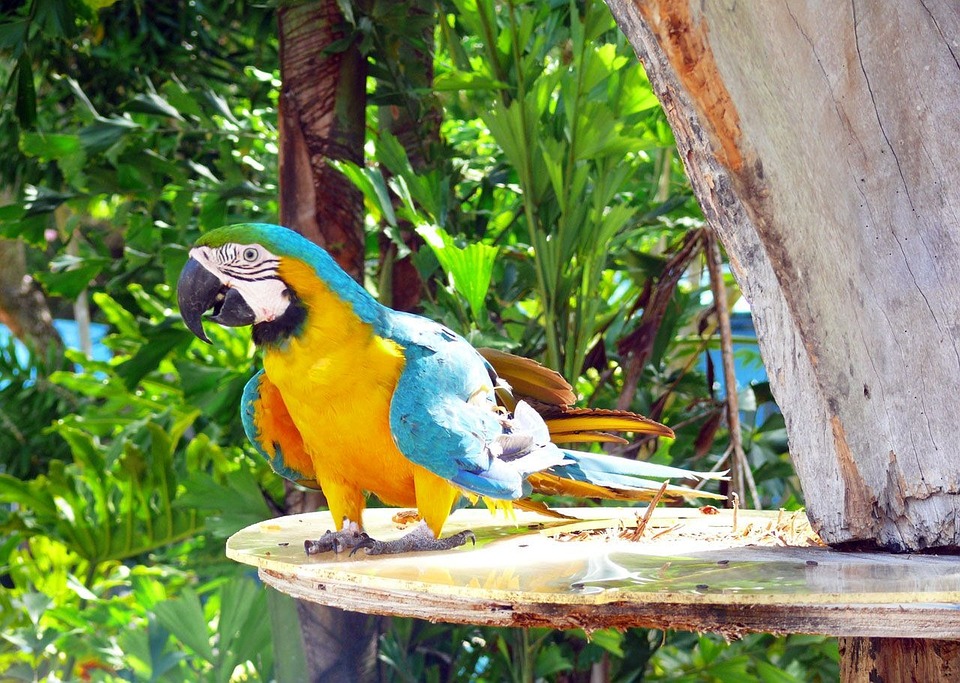Parrot training can be a delightful and rewarding experience, but it’s not uncommon for our feathered friends to encounter hesitation or fear when introduced to new training props. Whether it’s a colorful toy, a perch, or even a clicker, parrots may need some extra encouragement to overcome their initial apprehension. In this article, we will explore the power of positive reinforcement in addressing hesitation or fear of new training props, providing you with effective strategies to help your parrot feel more comfortable and confident.
Understanding the Importance of Positive Reinforcement
Positive reinforcement is a training technique that involves rewarding desired behaviors to encourage their repetition. It involves the use of rewards, such as treats, praise, or playtime, to reinforce a behavior, making it more likely to occur in the future. This technique creates a positive association with the desired behavior and helps build trust between you and your parrot.
Step-by-Step Guide to Addressing Hesitation or Fear
1. Introduce the Prop Gradually: When introducing a new training prop, it’s essential to take it slow. Start by placing the prop near your parrot’s cage or in its vicinity, allowing it to observe and get familiar with it from a distance. This gradual exposure will help reduce any initial fear or hesitation.
2. Positive Association: To create a positive association with the new prop, pair it with something your parrot already enjoys. For example, place a favorite treat or a toy near the prop, so your parrot associates the prop with something pleasant.
3. Encourage Exploration: Once your parrot shows some curiosity towards the prop, encourage it to explore further. Offer praise and rewards for any interaction with the prop, no matter how small. This positive reinforcement will help your parrot build confidence and overcome its fear.
4. Incremental Progress: As your parrot becomes more comfortable with the prop, gradually increase the level of interaction. For instance, if it shows interest in perching on the prop, reward that behavior and gradually increase the duration of perching. This incremental progress will help your parrot overcome hesitation or fear in a step-by-step manner.
5. Consistency and Patience: Consistency is key when using positive reinforcement. Make sure to provide rewards consistently for desired behaviors, even if they are small steps forward. Additionally, patience is essential as some parrots may take longer to overcome their fear. Avoid rushing the process and provide ample time and support for your parrot to adjust at its own pace.
FAQs
1. Q: My parrot seems terrified of the new prop. What should I do?
A: Start by placing the prop at a distance and gradually move it closer over time. Offer rewards and praise for any signs of curiosity or positive interaction. If your parrot remains extremely fearful, consult an avian behaviorist for further guidance.
2. Q: How long does it usually take for a parrot to overcome fear of new props?
A: The time it takes for a parrot to become comfortable with new props can vary significantly. Some parrots may adjust within a few days, while others may require weeks or even months. Remember to be patient and allow your parrot to progress at its own pace.
3. Q: Can I use negative reinforcement to address fear or hesitation?
A: It is not recommended to use negative reinforcement, such as punishment or force, when addressing fear or hesitation in parrots. Negative reinforcement can worsen the fear and damage the trust between you and your parrot. Stick to positive reinforcement techniques to build a strong and positive bond with your feathered companion.
4. Q: Are there any signs I should look out for to assess my parrot’s comfort level with a new prop?
A: Yes, observe your parrot’s body language. Signs of comfort include relaxed feathers, calm demeanor, and voluntary interaction with the prop. On the other hand, signs of discomfort may include raised feathers, beak grinding, or attempts to avoid or fly away from the prop.
Remember, each parrot is unique, and it’s important to tailor your training approach to fit their individual needs. By using positive reinforcement and following these strategies, you can help your parrot overcome its hesitation or fear of new training props, creating a harmonious and enjoyable training experience for both of you.









